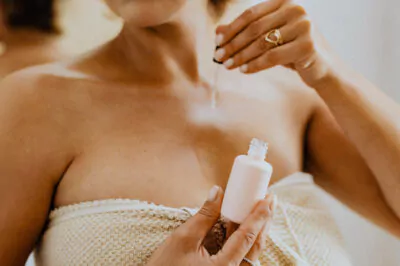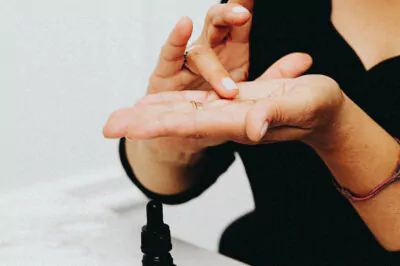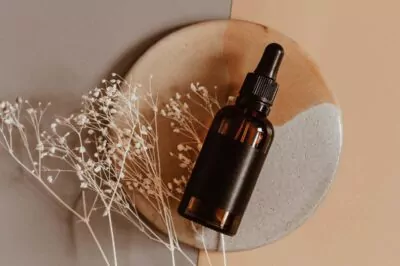Table of Contents[Hide][Show]
In the exciting world of skin care, it’s easy to adopt a ‘more is better’ philosophy. You have a serum for brightening, one for hydrating, and another for supporting a youthful looking complexion. The temptation to use them all at once is real, driven by the desire to give your skin everything it could possibly need. But can your skin actually handle it?
This brings up a crucial question that separates a hopeful routine from an effective one: How many serums are truly too many? Is there a magic number? And could layering multiple formulas actually be diminishing your results or even causing harm?
This guide will provide a clear, thoughtful answer to how many serums you should use in a single routine. We’ll explain the risks of over-application and show you a smarter, more effective strategy to get the most out of your entire serum collection.
The Definitive Answer: What Is the Ideal Number of Serums?
For any single skin care routine (morning or night), we recommend using a maximum of two serums. While it might be tempting to use more, applying only one or two targeted serums allows each formula to be properly absorbed and to work at its full potential without interference.
This isn’t about limiting your options; it’s about making them more effective. The most advanced skin care philosophy is not about adding more steps, but about adding more intention. Shifting from a consumer mindset of “more is better” to a curator’s mindset of “smarter is better” is the key to unlocking more noticeable, consistentresults. It’s about choosing the right tool for the job at the right time.
The “Why” Behind the Limit: 3 Risks of Using Too Many Serums

Understanding the reasoning behind this “rule of two” is essential. It’s not an arbitrary number; it’s based on how your skin actually functions and absorbs products.
Diminishing Returns (The Absorption Bottleneck)
Edited bc this feels contradictory to what we teach about applying products to damp skin: “When it’s dry, it eagerly soaks up water. But once it’s fully saturated, any extra water you pour on simply pools on the surface and runs off.”
Your skin can only take in so much at once. After one or two layers of a well-formulated serum applied to damp skin, the surface layers become sufficiently saturated with hydration and activated ingredients. Once this happens, adding more serums doesn’t increase absorption — it simply exceeds what the skin can hold at that moment.
Anything applied beyond this point is much more likely to remain on the surface rather than penetrate. Not only does this lead to product waste, but it can also leave the skin feeling tacky or overloaded without offering additional benefit.
The Risk of Irritation & Overwhelming Your Skin’s Barrier
Each serum is a potent, concentrated formula of activated ingredients designed to send a specific “message” to your skin—whether it’s to hydrate, brighten, or soothe. When you pile on three, four, or more serums at once, you’re essentially shouting too many conflicting messages at your skin.
This can overwhelm your skin’s natural protective barrier. Imagine a team where every player is trying to be the captain. The result is chaos. For your skin, this chaos can manifest as sensitivity, redness, and I don’t think we can say breakout, change to congestion. Your skin’s barrier becomes stressed as it struggles to process the overload of different activated ingredients, and it may react in ways that are the exact opposite of what you’re trying to achieve.
The Potential for “Pilling” and Reduced Efficacy
Have you ever applied multiple products only to have them ball up into little flakes on your skin as you try to apply the next step? That’s called “pilling,” and it’s a clear, physical sign that your products are not absorbing.
Pilling happens when the layers on top are being applied before the layers underneath have had a chance to absorb, creating a traffic jam on your skin’s surface. The products are simply sliding around on top of each other and being rubbed off. When a serum is pilling, its precious activated ingredients are ending up on your fingers and in the sink, not in your skin where they can do their work. It’s the ultimate sign of an ineffective—and overloaded—routine.
A Smarter Strategy: The Power of Alternating
So, what do you do with your beautiful collection of serums? You don’t put them away. You use them more intelligently through alternation.
While layering (using 1-2 serums in the same routine) can be effective, alternating—using different serums in your morning vs. evening routines—is often the superior professional strategy. This is because it aligns with your skin’s natural daily rhythms and allows you to give your skin the full, focused benefit of each potent formula without competition.
You can provide your skin with exactly what it needs, when it needs it most:
- In the Morning: Your skin is in defense mode. This is the perfect time for a protective antioxidant serum to help guard against environmental stressors.
- In the Evening: Your skin is in renewal mode. This is the ideal time for a renewing or deeply hydrating serum to support the skin’s natural restorative processes overnight.
A Sample Weekly Serum Routine (Using 3 Serums Effectively)

Here is a practical example of how to create a “serum wardrobe” and use three different serums throughout the week. This schedule provides comprehensive care without ever overloading your skin in a single session.
- Your Serum Wardrobe:
- For Brightness & Protection (AM): Wild Fruit Serum
- For Deep Hydration (PM Rotation): Probiotic Serum with Tremella
- For Renewal & Texture (PM Rotation): Activated Night Serum
- Your Weekly Schedule:
- Every Morning: Apply the Wild Fruit Serum for antioxidant protection and a luminous look.
- Monday, Wednesday, Friday Evenings: Apply the Activated Night Serum, a beautiful plant-based alternative to retinol serums, to focus on skin texture and renewal.
- Tuesday, Thursday, Saturday Evenings: Apply the Probiotic Serum with Tremella to focus on deep hydration and supporting the skin’s barrier.
- Sunday Evening: Give your skin a “rest day” with just cleansing, toning, and moisturizing to allow it to reset and rebalance.
Curate Your Routine with Confidence
Choosing to limit your serums in a single routine is not about deprivation; it’s about intention and effectiveness. By embracing the “rule of two” and the power of an alternating schedule, you move from simply collecting products to mindfully curating a skin care wardrobe that truly serves your skin.
This empowers you to listen to your skin’s daily needs—is it thirsty today? Does it look dull?—and respond with the perfect treatment for that moment. This intentional, less-is-more approach is the true secret to a routine that delivers consistent, beautiful results, proving that a smarter routine is always better than a bigger one.
Ready to build your own intentional serum wardrobe? How to choose the right facial serum is the perfect place to start, and you can explore all your options in our full collection of targeted serums.
Frequently Asked Questions
So, how many serums can I use in one day?
We recommend a total of two serums per day at most: one in your morning routine and one in your evening routine. This “alternating” strategy is the most effective approach as it gives each potent formula dedicated space to work without competition. For example, use a protective antioxidant serum in the AM and a renewing serum in the PM.
How many drops of serum should I use per application?
A little truly goes a long way. A pea-sized amount, or about 2-3 pumps, is typically sufficient for the entire face, neck, and décolleté. The goal is to create a thin, even layer that absorbs with ease, as using more doesn’t improve results and often leads to a sticky feeling and wasted product.
How do I know if I’m using too many products?
Your skin will give you clear signals. The three most common signs are pilling (products balling up on your skin), a persistent sticky feeling, or a sudden increase in irritation or congestion. These are all physical signs that your products aren’t absorbing properly and your skin’s barrier may be overwhelmed.








Leave a Reply